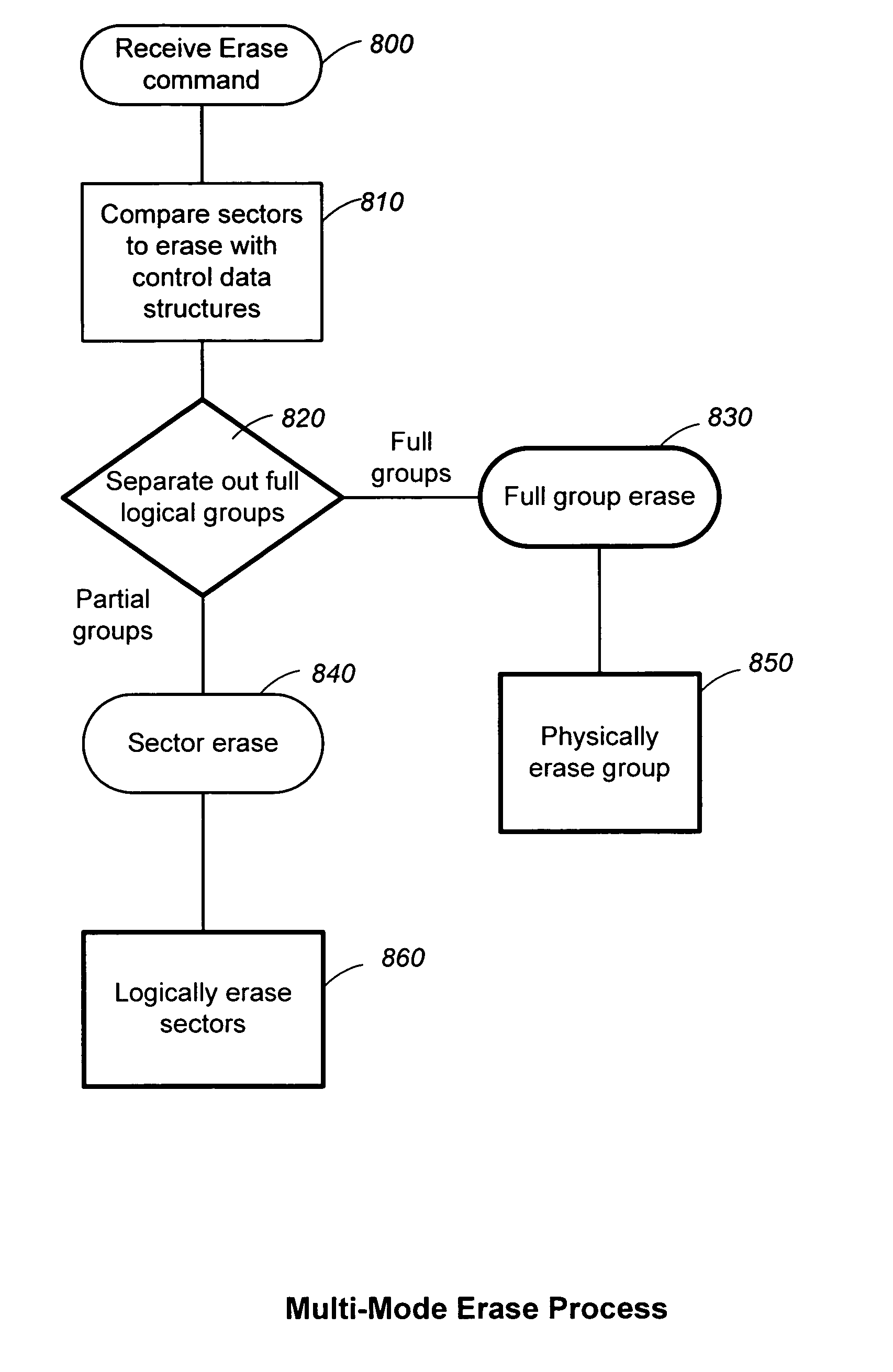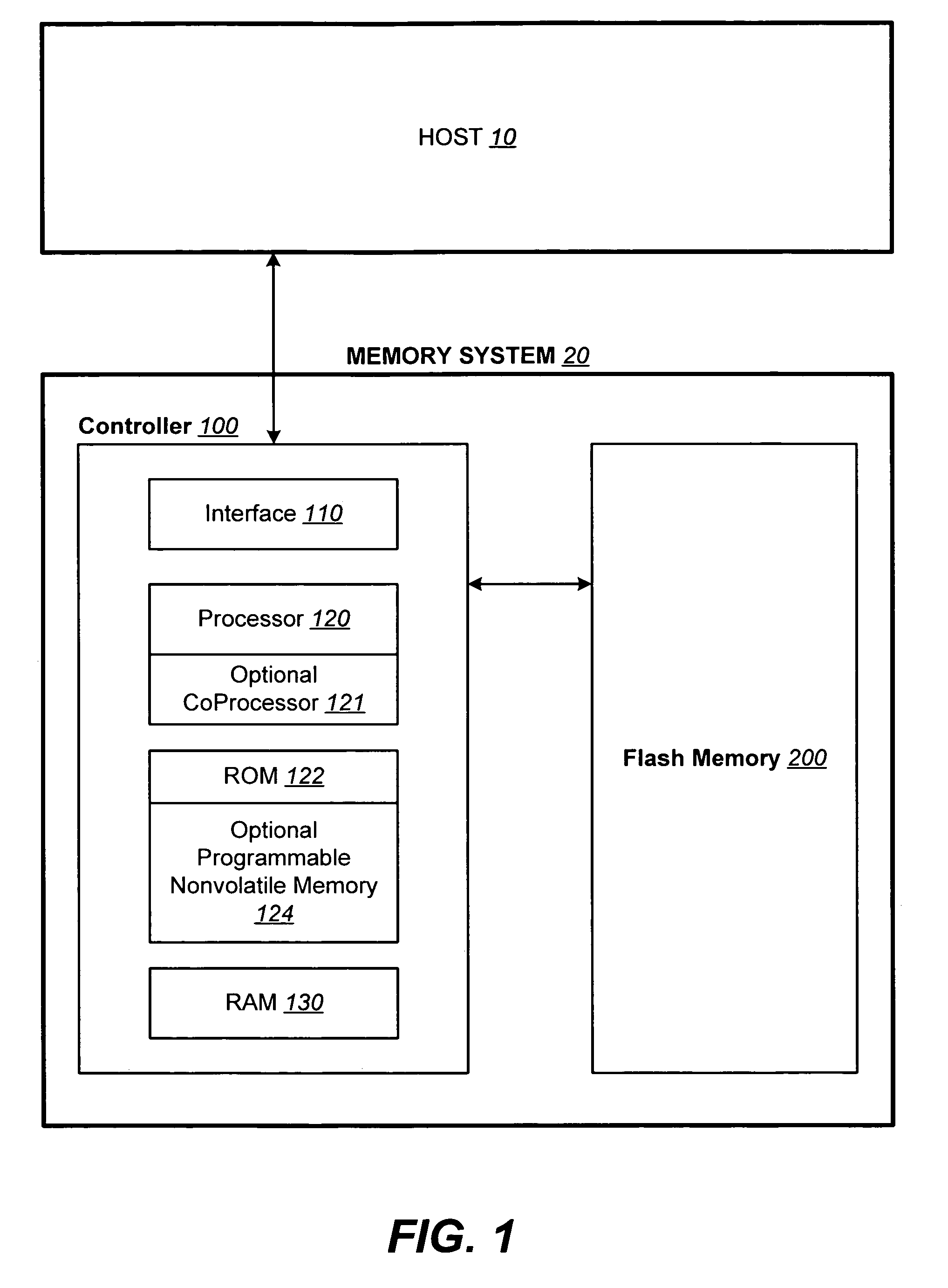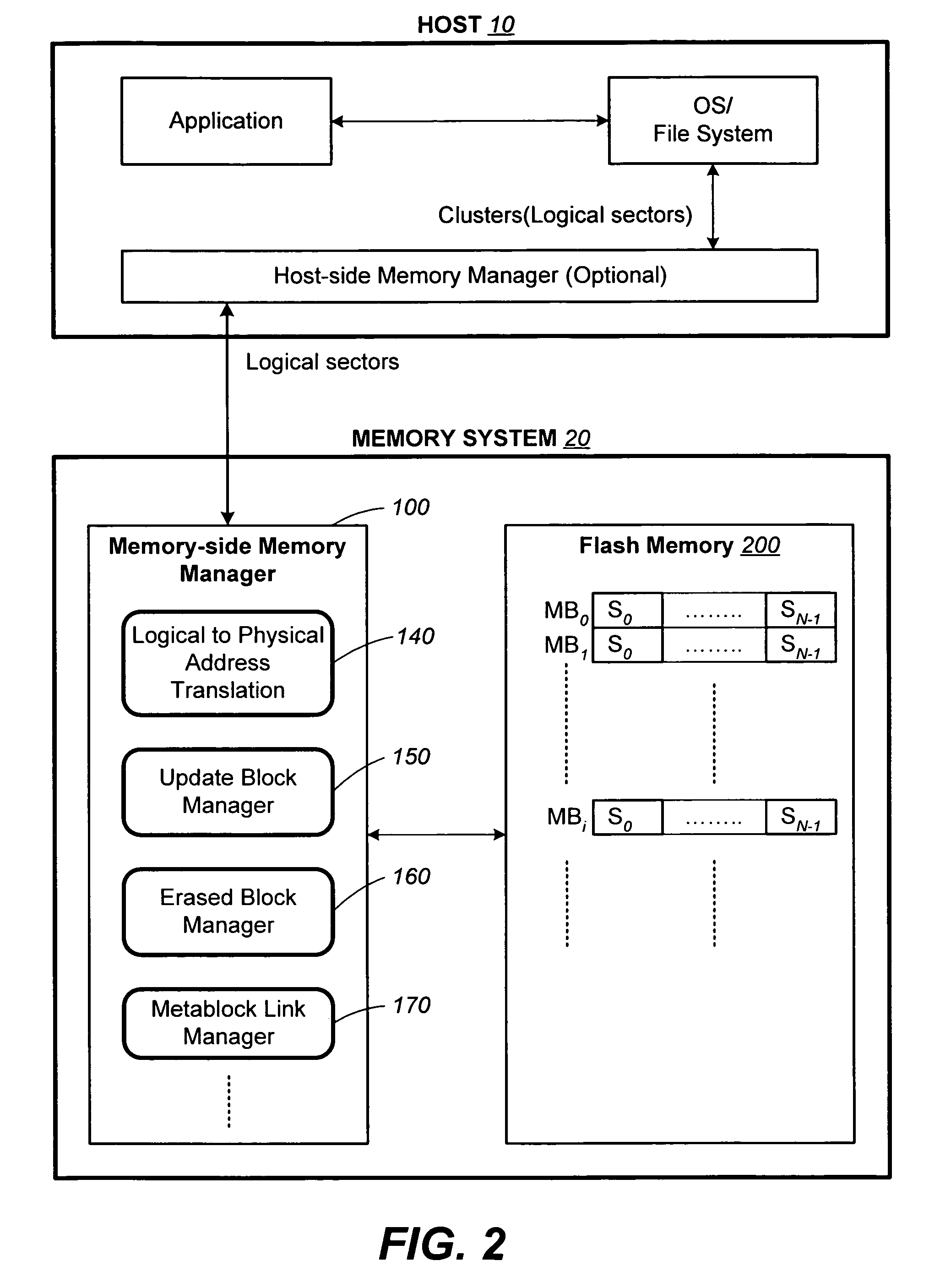Methods for the management of erase operations in non-volatile memories
a non-volatile memory and erase operation technology, applied in the direction of memory architecture accessing/allocation, instruments, computing, etc., to achieve the effect of improving the erase process and reducing the execution tim
- Summary
- Abstract
- Description
- Claims
- Application Information
AI Technical Summary
Benefits of technology
Problems solved by technology
Method used
Image
Examples
first embodiment
[0142]In a first embodiment, when the sectors to be erased span a logical group, the corresponding metablocks are physically erased and the erased group or groups are added to the existing erase pool. This can be implemented by introducing a set of firmware that can support the physical erase of logical groups and an increase in the erase pool. The main focus of the method is to provide a safe sequence of erase operations and control updates, so that the card can be recovered in the case of power loss.
[0143]The controller 100 (FIG. 1) of the memory system 20 will typically have its hardware, firmware, software, or some combination of these split into a front end (FE) and back end (BE), where the front end is the front or host interface memory system. The back end will then be a media management part that can be common for differing interfaces and across different products. In the exemplary memory system, a main part of the back end is a media management layer (MML) that makes the de...
third embodiment
[0163]A third embodiment is just to reformat the memory in case of a format command (which means Erase Sectors for the entire card), so that the card is reformatted as new. In order to do this, the memory system should contain the formatted code, where it is preferable that the formatter code is able to determine new, grown bad blocks. Although this results in card pre-conditioning, it may require extra memory space and a more advanced formatter.
(iv) Block Erase without Updates
[0164]In another embodiment, the system will erase metablocks for the “erased” logical groups, but without updating the erased block lists (EBL) 230 and MAP 240. Under this approach, the metablock to which the GAT points is erased. The system should make sure that the logical group to be “erased” is consolidated into an intact metablock and the GAT is updated to point to the erased metablock, so that it does not get lost. The erased block lists (EBL) 230 and MAP 240 should be updated as if the metablock is not...
fifth embodiment
[0165]A fifth embodiment uses a fast true erase done by single blocks. The information of a requested erase is recorded in erase block management (EBM, 760) sector, then the meta-block pointed by the GAT will be erased. The GAT can then be updated with the null pointer and the erased block can be added to the erased block lists (EBL) 230 and MAP 240.
[0166]This method would introduce a new set of firmware functions that can support the physical erase of logical groups and their addition to the erase pool. The main focus of the method is to provide a safe sequence of erase operations and control updates so that the card can be recovered in the case of power loss. A number of implementations are possible, but the following exemplary sequence executed by the media management layer can provide a safe mechanism for erasing a logical group:
[0167]1. Ensure that the logical group to be erased is consolidated into an Intact meta-block and the GAT is updated to point to the meta-block, which i...
PUM
 Login to View More
Login to View More Abstract
Description
Claims
Application Information
 Login to View More
Login to View More - R&D
- Intellectual Property
- Life Sciences
- Materials
- Tech Scout
- Unparalleled Data Quality
- Higher Quality Content
- 60% Fewer Hallucinations
Browse by: Latest US Patents, China's latest patents, Technical Efficacy Thesaurus, Application Domain, Technology Topic, Popular Technical Reports.
© 2025 PatSnap. All rights reserved.Legal|Privacy policy|Modern Slavery Act Transparency Statement|Sitemap|About US| Contact US: help@patsnap.com



